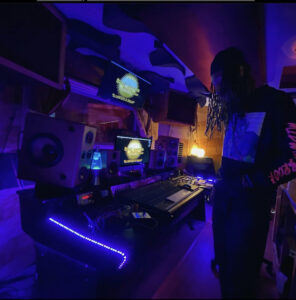In today’s world, the music industry is stepping its foot towards an all-new digital era. However, the signals recorded in an analog are more accurate than digital recordings. In other words, analog recording is a method of sound recording.
Record the sound, store, and play using digital or analog techniques. Both techniques introduce errors and distortions in the sound. Compare these methods using different methods. You will find the difference once you hear it.
In this article we will discuss the top 10 reasons why you should consider an analog music studio in Atlanta Georgia in 2024:
Let’s go!
1. Dynamic Range:
The dynamic range of a recording studio is a measure of the difference between the smallest and largest amplitude values. It can be represented in a medium.
With an analog recording studio, you can capture a wide range of volumes. You can hear very soft wipers and loud bangs.
It is one of the strengths of an analog recording studio. Analog Studio gives you a very natural and warm sound. It is like listening to a live performance.
This is because analog recording captures the complete sound wave without any interruptions.
( Also Read More – Behind the Sound- The Magic You Don’t Know About Recording Studios )
2. Warm and Rich Studio:
The sound recorded from an analog recording studio in Atlanta has something unique and different about it. It feels alive, warm, and full. It is not easily described, but once you hear it, you will understand.
This unique warmth and richness are often due to the subtle distortions and noise. The analog equipment adds to the sound.
A record or audiotape can be made using this method. Analog storage media stores analog content. For eg. paper, photographic paper or negative, film, microfilm, audio tape, VHS tape, etc. Analog audio provides life, warmth, and depth of sound.
3. Frequency Response:
The analog recording studio has frequency responses up to 20 kHz. However, these measurements may have been made at lower signal levels.
The low-frequency response of vinyl records is restricted by rumble noise. This is because they capture sounds in a continuous waveform.
Also, by physical and electrical characteristics of the entire pickup arm and transducer assembly. In the analog recording studio, an input audio waveform can be converted to an analogous waveform.
4. Aliasing:
Analog recording studios are not subject to aliasing or Nyquist frequency. The Nyquist frequency is a characteristic of a sampler. It converts a continuous function or signal into a discrete sequence. Analog Studio does not require anti-aliasing filters.
It also does not require any of the design considerations associated with them. Instead, the limits of analog storage formats are determined by the physical properties.
5. Quantization:

A signal is recorded digitally by an analog-to-digital converter. It measures the amplitude of an analog signal. It is specified by the sampling rate at regular intervals. Analog recording studios do not have discrete digital levels. So the audio signals cannot be encoded.
The accuracy to which the original signal can be preserved is limited by the noise floor. An analog recording studio samples and quantized an analog signal to produce a digital signal.
It is then represented, stored, and transmitted as discrete numbers.
6. Minimal Latency:
After initial recording, the audio signal can be altered in some way. In an analog studio, audio signals are processed in real-time without latency issues.
It can sometimes occur in digital recording setups. This is particularly advantageous for musicians who prefer to monitor their performances directly.
( Read More – What to Expect During a Recording Studio Session at Soul Asylum Studios )
7. Analog Modelling:
Many plug-ins exist now that incorporate analog modelling. Analog modelling carries some benefits over its analog counterparts. It removes noise from the algorithms and modifies to make the parameters more flexible.
Analog studios often house rare and vintage equipment. It is prized for its sonic qualities and historical significance. Engineers and producers may have access to analog consoles from the 1950s.
8. Early Digital Recordings:
Early digital audio machines have disappointing results. It introduces errors that the ear can detect. Digital audio has to be corrected to attain perfect audio. But in analog recording studios, analog recordings are made in natural concert hall acoustics.
It tends to benefit from remastering. The original analog recording was bright. Remastering resulted in an unnatural treble emphasis.
9. Creative Limitations:
The music studio Atlanta Analog studios often have limitations in terms of processing options, and editing. While this might seem restrictive, it encourages more thoughtful decision-making.
Artists and engineers must commit to their choices during recording and mixing. It leads to more deliberate and creative production decisions.
10. Learning and Growth:
Embracing analog recording techniques can broaden an engineer or musician’s technical skills. It deepens their understanding of fundamental recording principles.
Working with analog equipment requires a solid grasp of signal flow and analog processing techniques. It can enhance one’s overall proficiency as a recording professional.
Analog recordings evoke a sense of nostalgia with many artists and listeners can relate to. It can create a nostalgic connection to the golden age of recording.
Artists like The Beatles and Pink Floyd created iconic albums using analog technology.
Conclusion:
Due to the dynamic range, better frequency response, warmness, and growth potential, Analog recording studios are still on fire among 2024 recording studios. The methods and equipment used there deliver quality work with zero or minimal latency in all sessions. Introduced in the 20th century, the Analog recording studios are still a thing that beat most of the modern competitions till date.

